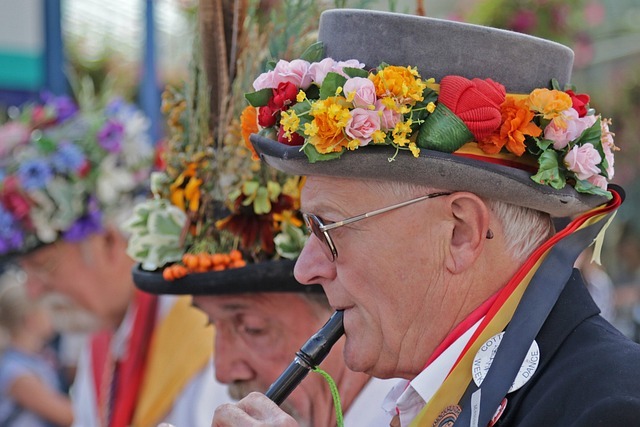Folk Festivals are more than just events; they are a living tapestry of tradition, culture, and community. These festivals are a vibrant celebration of dance, music, and color, bringing people together to honor their heritage and share their unique cultural expressions. In this article, we will explore the enchanting world of Folk Festivals, delving into their history, significance, and the unforgettable experiences they offer.
The Essence of Folk Festivals
Folk Festivals are deeply rooted in the traditions and customs of a particular region or community. They often involve performances of traditional music and dance, as well as the showcasing of local crafts, foods, and rituals. These festivals serve as a bridge between the past and the present, preserving cultural heritage while fostering a sense of unity and pride among participants and spectators alike.
The Historical Significance of Folk Festivals
The origins of Folk Festivals can be traced back to ancient times, when communities would gather to celebrate seasonal changes, religious events, or significant milestones. These gatherings were not only a means of marking important occasions but also a way to strengthen communal bonds and pass down cultural knowledge from one generation to the next. Today, Folk Festivals continue to play a crucial role in preserving and promoting cultural diversity.
Key Elements of Folk Festivals
1. Traditional Music
Music is a central element of Folk Festivals, reflecting the soul of a culture. From the haunting melodies of Celtic folk songs to the rhythmic beats of African drumming, traditional music at these festivals tells stories of love, loss, joy, and resilience. Musicians often use indigenous instruments, such as the sitar, balalaika, or didgeridoo, adding authenticity and richness to the performances.
2. Folk Dance
Dance is another integral part of Folk Festivals, with each culture boasting its own unique styles and forms. These dances are often characterized by intricate footwork, vibrant costumes, and expressive movements. Whether it’s the energetic Irish step dance, the graceful movements of Japanese Bon Odori, or the exuberant polka of Eastern Europe, folk dances captivate audiences and invite them to participate in the celebration.
3. Colorful Costumes
Costumes play a significant role in Folk Festivals, often symbolizing historical, religious, or social aspects of a culture. These outfits are typically handmade, featuring elaborate embroidery, beadwork, and other decorative elements. The bright colors and intricate designs of traditional costumes add to the visual spectacle of the festivals, creating a feast for the eyes.
4. Cultural Rituals and Traditions
Many Folk Festivals include rituals and traditions that have been passed down through generations. These can range from ceremonial dances and religious rites to storytelling sessions and craft demonstrations. These practices offer a glimpse into the cultural heritage of a community and help to keep these traditions alive.
Notable Folk Festivals Around the World
1. Oktoberfest, Germany
While primarily known as a beer festival, Oktoberfest in Munich also celebrates Bavarian folk traditions. Visitors can enjoy traditional music, dance, and food, all while dressed in lederhosen and dirndls. The festival is a vibrant display of German culture, attracting millions of visitors each year.
2. Dia de los Muertos, Mexico
The Day of the Dead is a colorful and poignant festival that honors deceased loved ones. Celebrated with music, dance, and elaborate altars adorned with marigolds, sugar skulls, and photographs, this festival showcases Mexico’s rich cultural heritage and deep respect for ancestors.
3. Edinburgh Festival Fringe, Scotland
The Edinburgh Festival Fringe is the world’s largest arts festival, featuring a diverse array of performances, including traditional Scottish music and dance. This festival provides a platform for artists to showcase their talents and for audiences to immerse themselves in Scotland’s vibrant cultural scene.
4. Holi, India
Holi, also known as the Festival of Colors, is a joyous celebration of spring and the triumph of good over evil. Participants throw colored powders, dance to traditional music, and enjoy festive foods. Holi is a stunning display of color and energy, embodying the exuberance of Indian culture.
5. National Folk Festival, Australia
The National Folk Festival in Canberra is a celebration of Australia’s folk traditions and multicultural heritage. The festival features performances of traditional music and dance, workshops, and craft demonstrations, offering a comprehensive experience of Australian folk culture.
The Importance of Folk Festivals
Folk Festivals play a vital role in preserving cultural heritage and promoting intercultural understanding. They provide a platform for communities to share their traditions with the world, fostering appreciation and respect for cultural diversity. These festivals also offer economic benefits, attracting tourists and supporting local artisans and performers.
Tips for Enjoying Folk Festivals
To make the most of your Folk Festival experience, consider the following tips:
- Do Your Research: Learn about the festival’s history and significance before attending to gain a deeper appreciation for the events and performances.
- Dress Appropriately: Some festivals encourage participants to wear traditional attire. Check the dress code and consider dressing in cultural costumes to fully immerse yourself in the experience.
- Participate: Join in the dances, try the traditional foods, and engage with the performers and artisans. Participation enhances your experience and shows respect for the culture.
- Respect the Traditions: Be mindful of cultural practices and customs. Show respect by observing rituals and traditions with reverence.
- Capture the Moments: Bring a camera or smartphone to document the vibrant performances and colorful costumes. However, always ask for permission before taking photos of individuals.
Folk Festivals are a celebration of the rich tapestry of human culture. They offer a unique opportunity to experience the traditions, music, dance, and artistry of different communities. By attending these festivals, we not only enjoy a vibrant and colorful spectacle but also contribute to the preservation and appreciation of cultural heritage. So, next time you have the chance, immerse yourself in the world of Folk Festivals and let the dance, music, and color transport you to a different place and time.


